News
Russia’s Best Ever Fighter Jets: Six Combat Aircraft That Were Far Ahead of Their Time

Although having a negligible industrial base at the beginning of the 20th century, Russia emerged as one of the world’s leading industrial powers during the 1930s and 40s under a Stalinist economic program which paved the way to its military ascendance. Rapid economic and industrial growth and modernisation from 1928 allowed the country to begin competing as a leading player in military aviation by the late 1940s, with Soviet fighters first making a strong impression on the world during the Korean War. Competing neck to neck with the United States, the USSR produced multiple classes of combat aircraft which were far ahead of their time. As a result from the 1940s to the 2010s Russian combat aircraft were considered the leading threats to American air superiority, and caused serious complications for Western Bloc operations in theatres from Korea and Vietnam to Indonesia and Iraq. Although the USSR’s disintegration and Russia’s subsequent economic contraction in the 1990s quickly diminished the country’s position in aviation, leaving it heavily reliant for decades on research and development from the 1980s, the legacy of its Soviet era fighter industry continues to influence the balance of power in theatres across the world. A look at the six most revolutionary Russian and Soviet fighter and interceptor jet aircraft for their times is given below:
MiG-15/17 First Generation Fighters
Entering service in 1948, the MiG-15 fighter was almost unanimously considered the most capable of its era and during the Korean War demonstrated its very significant performance advantages over rival Western designs. Despite significant deficiencies in training in the newly formed air forces of China and North Korea which operated the jets, their performance in Korean skies forced American bombers to restrict their operations to nighttime. U.S. Air Force General Charles Cleveland stated to this effect: “You have to remember that the little MiG-15 in Korea was successful doing what all the Focke-Wulfs and Messerschmitts of World War II were never able to do: Drive the United States bomber force right out the sky.” Air Force Chief of Staff General Hoyt Vandenburg similarly highlighted that the MiG-15 demonstrated the Soviet fighter industry was surpassing that of the U.S. The MiG-15 left dozens of Western fighter design effectively obsolete, with only the U.S. Air Force’s elite F-86 Sabre jets fielded in much smaller numbers being capable of seriously challenging the MiG although still being overall less capable. The MiG-15 notably achieved superiority despite not being the most capable Soviet fighter of the Korean War era, with the more advanced MiG-17 fielded from 1952 with thinner more highly swept wings, a significantly higher speed, and the ability to make more extreme manoeuvres.
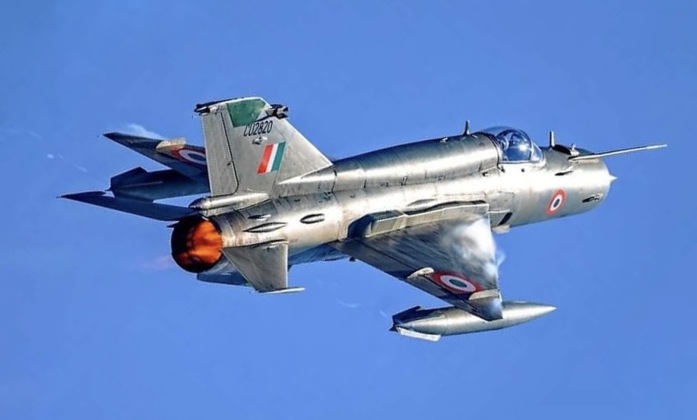
MiG-21 Second Generation Fighter
First flying in 1955, the MiG-21 was the last truly revolutionary fighter the USSR would develop before the 1980s, with industry losing momentum under the Nikita Khrushchev administration as the aircraft was in its final stages of development. The airframe’s potential for modernisation and improvement was perhaps greater than any other ever built, which combined with a high cost effectiveness resulted in a production run that lasted into the 2010s. While initially fielded a second generation fighter, the MiG-21 would later gain third and then fourth generation level avionics and weaponry, with the most advanced variations flying for China and for the Indian Air Force. In Indian service the fighters would integrate modern active radar guided air to air missile and electronic warfare systems that comfortably surpassed the performance of many fourth generation jets – such as early variants of the F-16. In China advanced variants remained in production until as late as 2013. All aspects of the fighter’s performance would be improved significantly over its 27 year production run, from its sensors and armaments to is engines and the materials used for airframe construction. The original MiG-21 was unrivalled when it entered service, as demonstrated by its overwhelming victories in Indian hands against American-built F-104 jets, and would meet its match only with the entry into service of the much heavier and more costly twin engine F-4E Phantom from 1965. Derivatives of the MiG-21, most notably the Chinese JL-9 trainer and its carrier based counterpart the JL-9G, remain in production today, are are expected to remain flying into the 2030s.
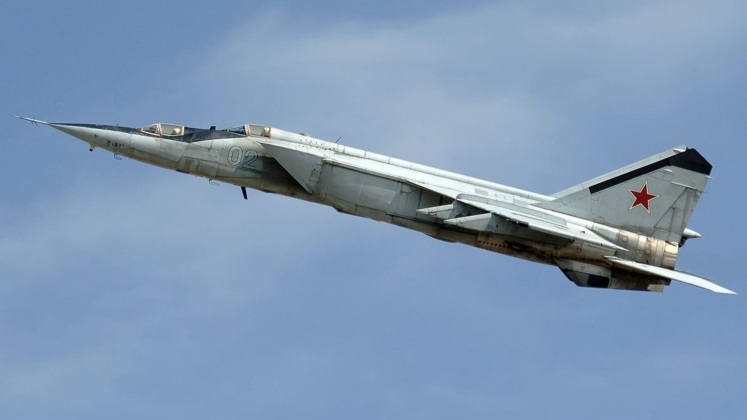
MiG-25 Third Generation Interceptor
Entering service from 1970, the MiG-25 Foxbat interceptor broke barriers with its highly ambitious heavyweight twin engine design which, although coming from the third generation, proved more than capable of going head to head with Western fourth generation fighters. The Foxbat was faster and has a higher altitude ceiling than any other production combat jet, and carried R-40 air to air missiles with massive 100kg payloads, sophisticated guidance systems and for their time very long ranges. Its sheer speed and altitude made it effectively invulnerable to Cold War era fighters, with only the U.S.’ top heavyweights the F-14 and F-15 able to threaten it and even these struggling to do so. Against lighter F-16s and F-4s the aircraft proved multiple time to be all but invulnerable. The MiG-25 saw its final combat with its longtime rival the F-15 on January 30, 1991, when the Iraqi-operated jets neutralised a single American fighter for no losses. The MiG-25’s primary deficiency was its very high operational cost, with the heaviest aircraft of the following generation the Su-27 and MiG-31 both being much cheaper to operate which provided a strong incentive to phase the older aircraft out of service.
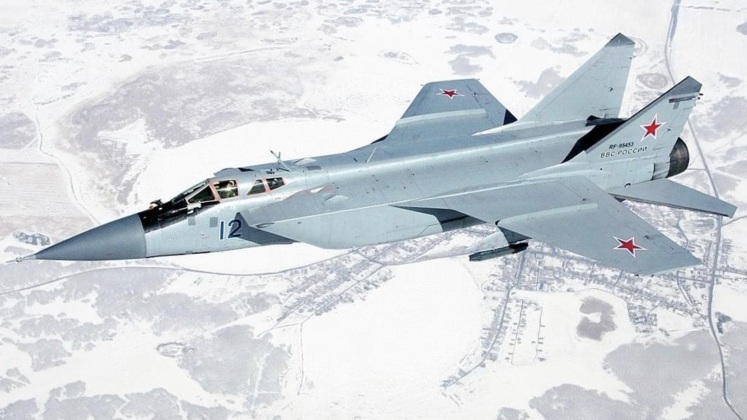
MiG-31 Fourth Generation Interceptor
A successor to the MiG-25, the MiG-31 entered service from 1981 as a heavier design which used the most powerful engines ever integrated onto a fourth generation tactical combat jet. The aircraft was revolutionary in many respects, most notably its use of an electronically scanned array radar for air to air combat 20 years before any Western or East Asian design would do the same. The sheer size of its radar, and its ability to fly supersonically at over Mach 2 for sustained periods, allowed the aircraft to patrol the USSR’s vast territory including the Arctic where it was optimised for operations. The MiG-31 would see very signifiant improvements with the development of the MiG-31M, which was even heavier and used engines that surpass any to ever be used on a fighter or interceptor in thrust while integrating a sensor suite that was significantly more powerful still. The MiG-31M first flew in the 1980s and was in many respects more revolutionary in its time than the original variant, although the Soviet collapse ultimately ended the program despite all research and development needed for serial production having been completed. Improvements to the baseline MiG-31 from the late 2000s have nevertheless ensured that it in many respects remains the most dangerous aircraft in Russian service in terms of its long range air to air performances, with the interceptor first combat tested with impressive results in the Russian-Ukrainian War in 2022.
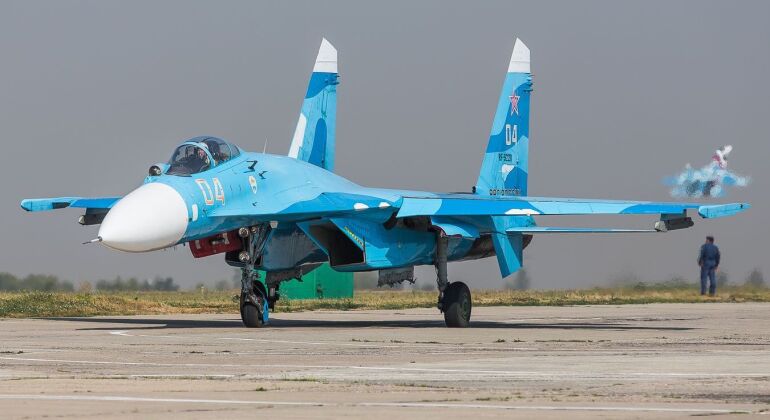
Su-27 Fourth Generation Fighter
Entering service in 1984, the Su-27 Flanker was a heavyweight air superiority fighter developed specifically to outperform the American F-15 Eagle. The fighter was significantly more manoeuvrable than any in the Western world, and had an unrivalled endurance allowing it to operate offensively as far as British airspace from bases in Poland. The Flanker was world’s first fighter with components made of automatically liquid arc-welded high-strength titanium, and had a significantly lower fuselage cross section than its top Western counterparts. Its R-27ER/ET beyond visual range air to air missiles were unmatched for their time among missiles that could be carried by fighter sized aircraft, while its R-73 short ranged missiles paired with helmet mounted sights allowed it to engage targets at extreme angles that non-Soviet jets could not come close to matching. The Su-27 was also one of the first in the world to mount infra red search and track systems alongside its radar, which the U.S. would widely adopt for new fighters only from the 2010s. The Flanker and its derivatives proved capable of comfortably outperforming Western fighters during multiple exercises and tests after the Cold War’s end, most notably in the hands of the Indian Air Force, but also when flown by American pilots after the aircraft were acquired from Belarus for testing. Almost all tactical combat jets acquired by post-Soviet Russia since the 1990s have been derivatives of the Su-27, with three production lines currently open across the country producing the Su-30, Su-34 and Su-35 for domestic use all of which were developed from the original Flanker design.
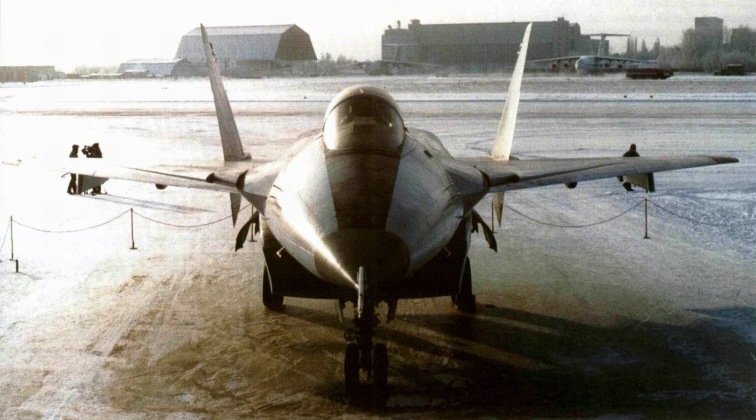
MiG 1.42 Fifth Generation Fighter
Developed as a direct successor to the Su-27, the MiG 1.42 fifth generation air superiority fighter was a key pioneer of next generation technologies intended to surpass the performance of the rival American Advanced Tactical Fighter program that created the F-22 Raptor. Referred to in the 2000s by Russian Air Force representatives as “not even tomorrow’s aircraft but truly the day after tomorrow’s aircraft,” the stealth fighter was set to make breakthroughs in all aspects of flight performance with records set for the number of control surfaces used, as well as breakthroughs in stealth technologies. This included radar evading capabilities based on using plasma from electromagnetic rays to absorb radio waves. The MiG’s sensor suite was highly formidable with a 420km detection range against larger fighters, while its AL-41F engine had thrust levels and a thrust/weight ratio far ahead of its time with efficiency comparable to the American F135 powering the F-35 fighter. The program was terminated following the USSR’s disintegration and the rapid deterioration of Russia’s defence sector, with four prototypes uncompleted and an early technology demonstrator the MiG 1.44 having flown. Significant delays developing a less ambitious next generation fighter under the Su-57 program mean that Russia’s top tactical combat aviation units are unlikely to again enjoy the kind of qualitative edge they once did with the Su-27, with the Su-57 being far less outstanding for its time than the Flanker was or than the MiG 1.42 was poised to be.












